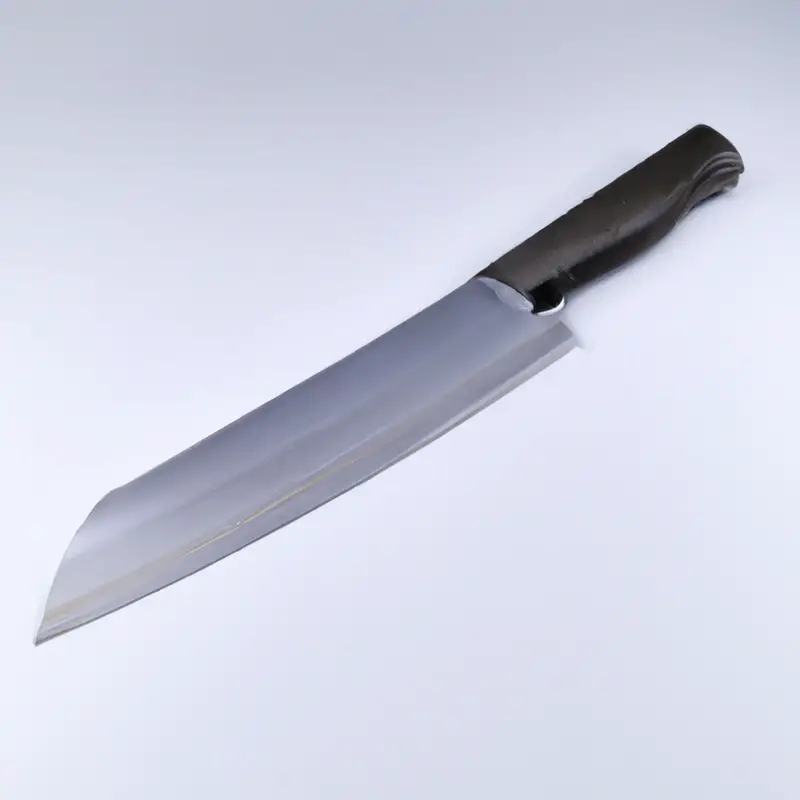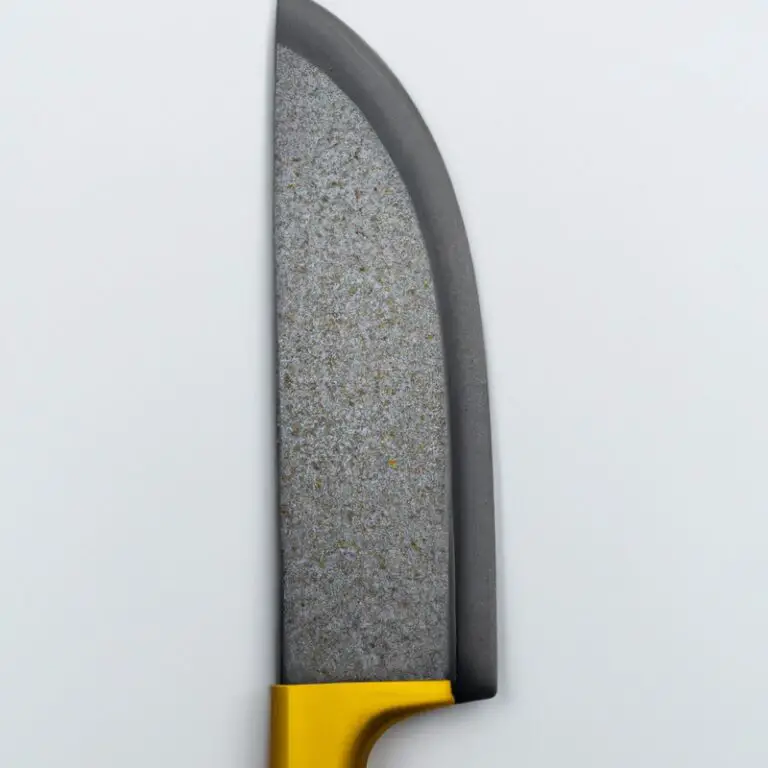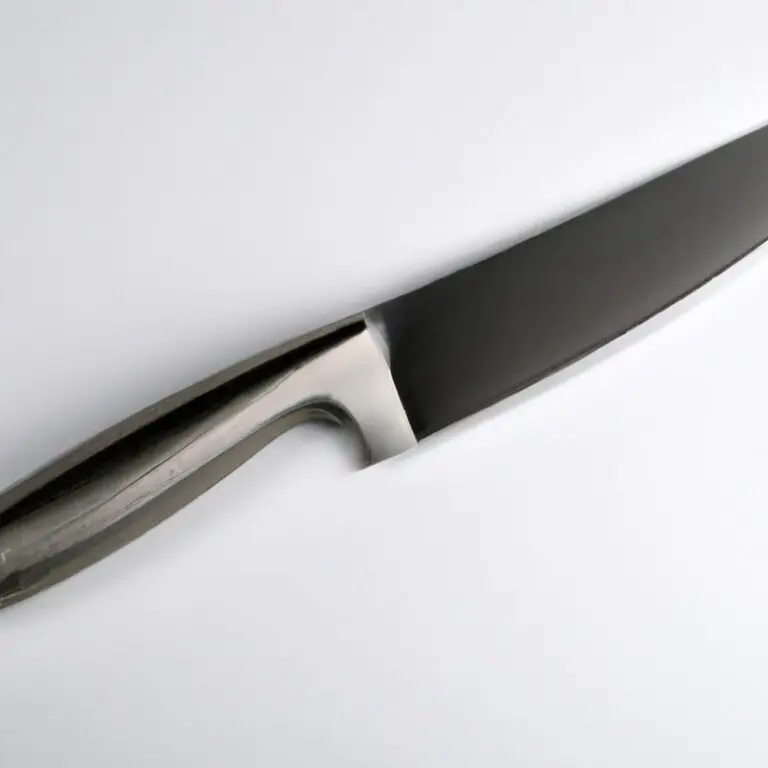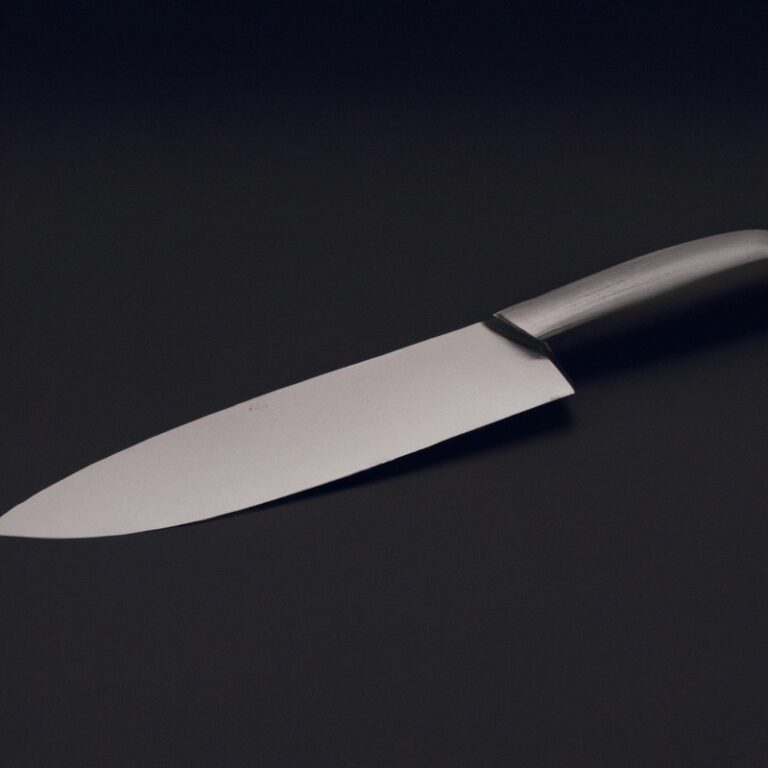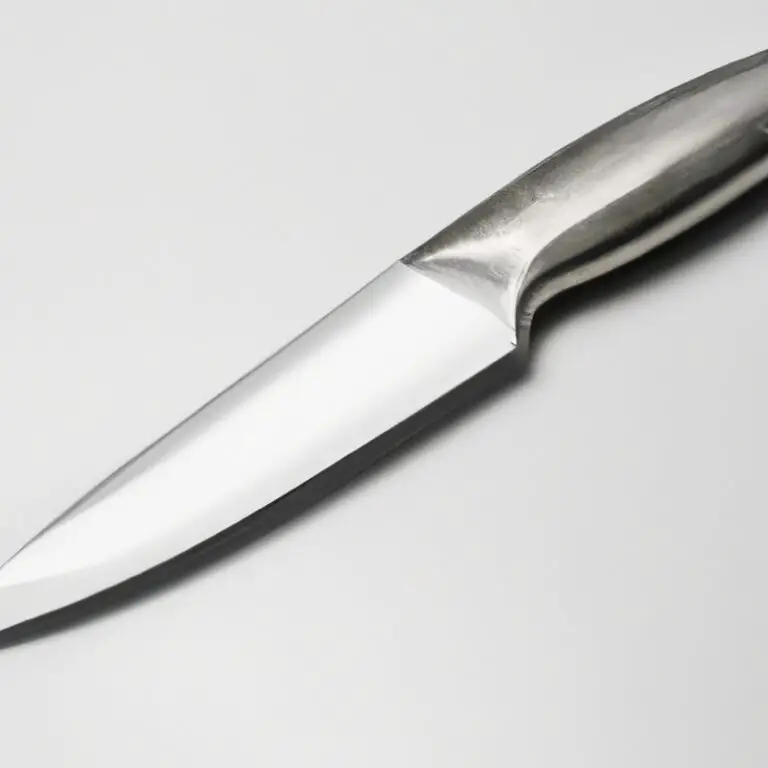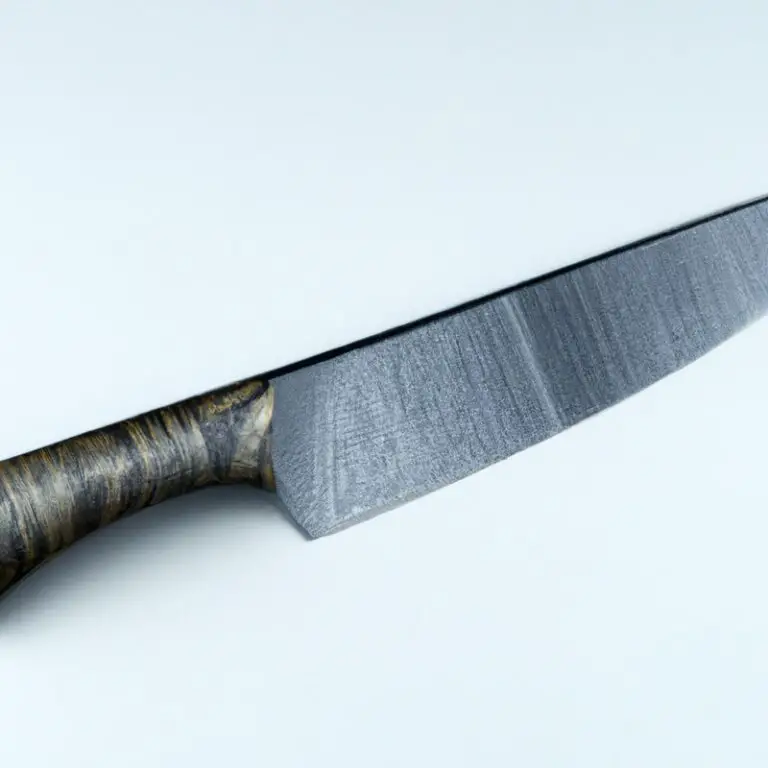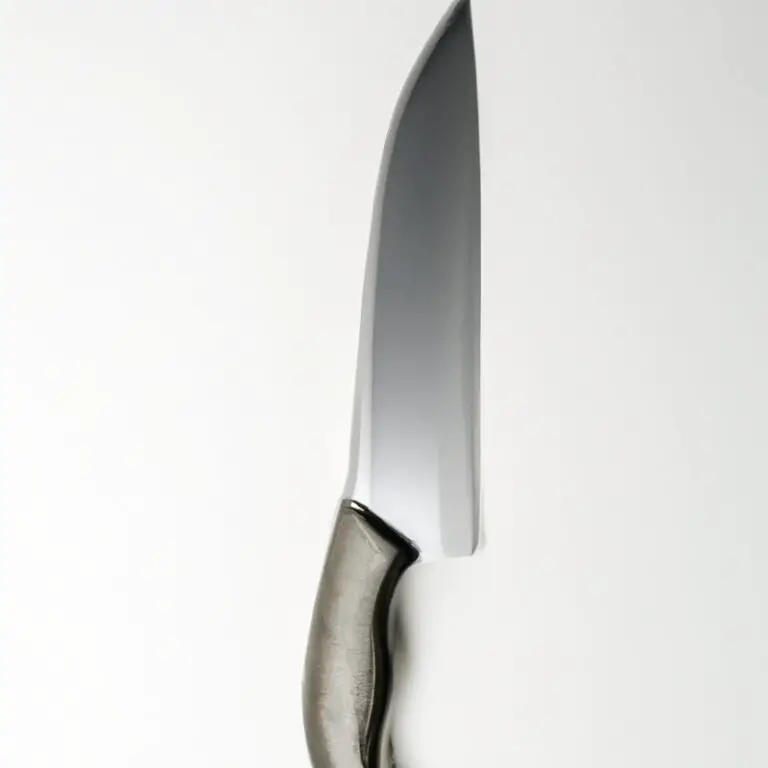What Are The Benefits Of Using a Gyuto Knife For Precision Tasks? Slice With Precision
Key Takeaways:
- Gyuto knives are versatile Japanese-style knives that are useful for precision tasks in the kitchen.
- The narrow, pointed blade of a Gyuto knife makes it ideal for slicing, dicing, and chopping with precision.
- When choosing a Gyuto knife, it’s important to look for high-quality materials and construction to ensure durability and longevity.
- Proper care and maintenance of your Gyuto knife can help you get the most out of this versatile kitchen tool for years to come.
Are you tired of struggling with imprecise cuts and uneven slices in the kitchen? The answer to your culinary woes might just be a Gyuto knife.
This Japanese all-purpose knife is renowned for its precision, razor-sharp edge, and ergonomic design.
In this article, we will explore the benefits of using a Gyuto knife for precision tasks, compare it with a Chef’s knife, understand its anatomy, maintenance, and usage in Japanese cuisine. Whether you’re a professional sushi chef or a home cook, this complete guide to Gyuto knives is the perfect tool to help you up your game in the kitchen.
| Gyuto Knife Benefits |
|---|
| 1. Versatile – can handle various precision tasks in the kitchen |
| 2. Lighter weight design provides greater agility and maneuverability |
| 3. Longer and sharper blade than traditional Western knives |
| 4. Allows for more precise cuts and thinner slices |
| 5. Ideal for intricate and detailed work, such as filleting fish and slicing sushi |
| 6. Made of high-quality materials, such as Damascus steel or VG-10 stainless steel |
| 7. More ergonomic handle designs for greater comfort during use |
| 8. Often more durable and long-lasting than cheaper alternatives |
Understanding the Gyuto Knife: A Complete Guide for Precision Tasks
The Gyuto knife is a Japanese kitchen tool used for precision tasks, like slicing meat, fish, and vegetables. It has a thin and sharp blade, up to 12 inches long, with a pointed tip, and a slightly curved edge.
The blade is made of high-quality steel, which can hold an incredibly sharp edge and is easy to sharpen.
Understanding the anatomy of a Gyuto knife is crucial for handling and using it correctly. The tip, spine, heel, and edge are the four main parts of the blade.
The handle is made of different materials, including wood, plastic, and metal, and has a comfortable grip to avoid slipping and enhance precision.
Gyuto knives are known for their razor-sharp edge, which makes them ideal for precision work in the kitchen. They can cut through vegetables and meat with ease, without crushing or tearing them.
The long and thin blade allows you to make long and precise cuts, giving you ultimate control and precision.
Compared to a chef’s knife, a Gyuto knife’s blade is thinner, longer, and sharper. For fine-cut tasks, the Gyuto knife is an excellent choice as its long blade can cut through food with one fluid motion without the need for sawing or hacking.
The Gyuto knife is also more versatile than a Nakiri knife as it is designed for both slicing and chopping.
To keep your Gyuto knife in top condition, it is essential to follow proper maintenance techniques, including regular sharpening, cleaning, and storage. A well-maintained Gyuto knife can last for years and serve you well in the kitchen.
Overall, understanding the Gyuto knife’s anatomy, sharpness, and precision advantages is the key to mastering this essential kitchen tool for precision tasks.
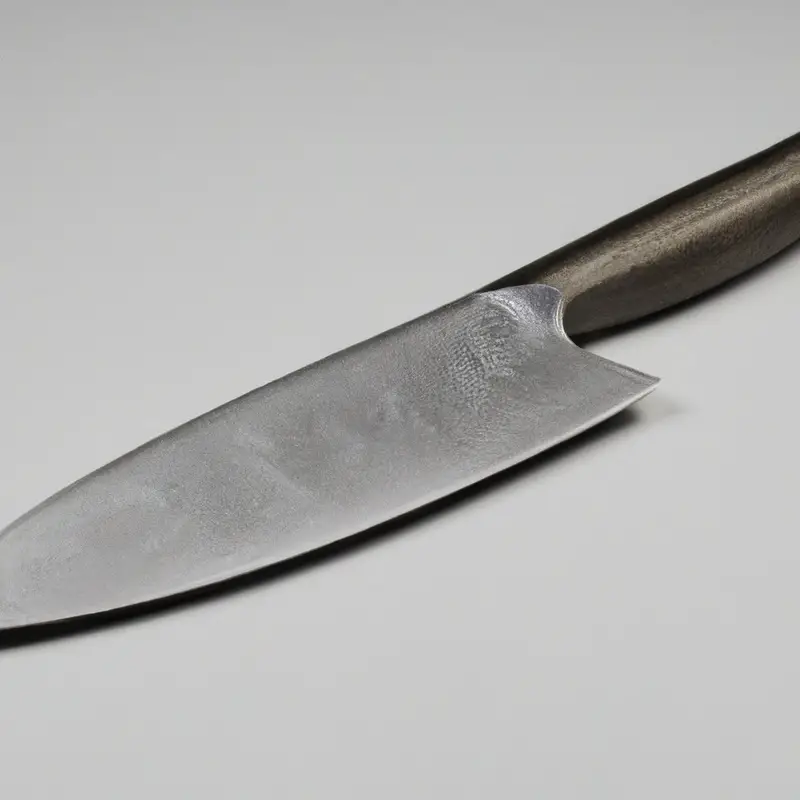
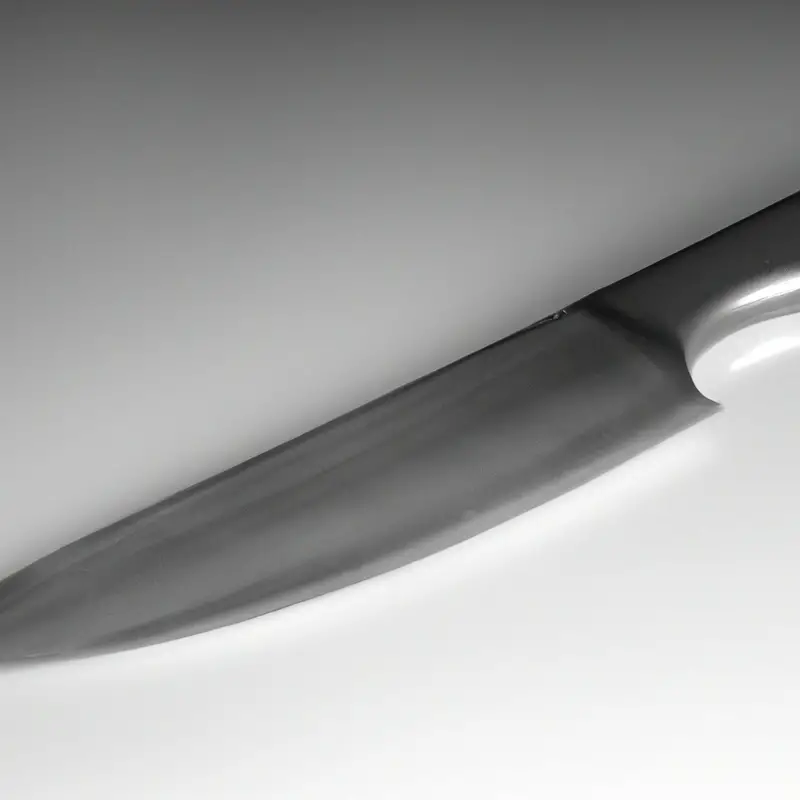
Anatomy of a Gyuto Knife: Understanding the Parts and its Functionality
The gyuto knife is a versatile and efficient cutting tool suitable for various precision kitchen tasks. The knife’s anatomy features a long blade that ranges from 7 inches to 12 inches.
The blade is thin and lightweight.
The handle is ideally designed to be comfortable, firm, and balanced. The gyuto knife’s main parts include the blade, handle, tang, bolster, heel, and spine.
The blade: It is the cutting edge of the knife, and it can be straight or curved.
The blade’s sharpness and sleek design make it easier to use for precision-cuts. The handle: It is the part of the knife that you hold onto.
The handle is intentionally designed to offer balance and comfort.
It is usually made with different materials such as wood, plastic, or stainless steel. Tang: It is the extension of the blade into the handle.
The tang is an essential part of the knife because it offers extra strength and durability.
Bolster: It is the thick junction between the blade and the handle. The bolster is where the weight distribution comes from, making it easier for users to handle the knife.
Heel: It is the broad part of the blade that meets the handle.
The heel provides leverage for some precision cuts and gives the knife balance. Spine: It is the top edge of the blade which is not sharpened and provides additional strength and stability.
Overall, the gyuto knife’s design ensures that it is well balanced and has a comfortable grip, making it ideal for precision tasks in the kitchen.
Sharpness Matters: Why a Gyuto Knife is known for its Razor-Sharp Edge
A Gyuto knife is widely known for its razor-sharp edge, which is the result of its design and manufacturing process. The blade is made of high-quality steel that is specially treated and hardened to achieve maximum sharpness and durability.
The thin, V-shaped blade of the Gyuto knife allows for precision cutting of meat, fish, vegetables, and other ingredients.
Additionally, the blade is designed to be versatile, which means that it can handle a wide range of kitchen tasks with ease. A sharp Gyuto knife offers greater precision and control, making it an essential tool for any home or professional chef who values quality and efficiency in their work.
The Benefits of using a Gyuto Knife for Precision in the Kitchen
Using a Gyuto knife in the kitchen has numerous benefits for precision tasks. These benefits include:
- Sharpness: A Gyuto knife is known for its razor-sharp edge, which makes it easy to make precise cuts, such as thin slices of vegetables and fruits.
- Versatility: The knife is designed to handle different cooking needs, from delicate slicing to heavy chopping.
- Control: The knife’s long and thin blade allows for better control, leading to more accurate cuts.
- Comfort: The ergonomics and balance of a Gyuto knife makes it comfortable to use, even for extended periods.
- Efficiency: With a Gyuto knife’s sharpness and versatility, one knife can handle multiple tasks, reducing the need for multiple knives in the kitchen.
- Presentation: The knife’s ability to make precision cuts means that your food will look more aesthetically pleasing, ideal for presentation purposes.
In summary, using a Gyuto knife in the kitchen is beneficial for precision tasks, thanks to its sharpness, versatility, control, comfort, efficiency, and presentation capabilities.
Gyuto Knife vs Chef’s Knife: Why the former is Ideal for Fine-Cut Tasks
The Gyuto knife and the Chef’s knife are both popular kitchen knives, but they have significant differences that make one more suitable for fine-cut tasks than the other. The Gyuto knife is lighter and thinner than the Chef’s knife, which makes it perfect for intricate precision tasks such as mincing, slicing, and dicing.
Its straighter cutting edge allows for more precise control of the blade and reduces the possibility of unintentional food crushing, resulting in a cleaner and professional-looking cut.
In contrast, the Chef’s knife is heavier and wider, primarily designed for tougher tasks such as cutting through bones or harder vegetables. While it can also perform fine-cutting, it may require more effort and skill than the Gyuto knife.
Therefore, when it comes to fine-cut tasks, the Gyuto knife is an excellent choice for chefs who value precision and finesse.
Gyuto Knife Maintenance: Tips to keep your Razor-Sharp Knife in top condition
To keep your Gyuto knife in top condition and sharp, follow these maintenance tips:
- Hand wash the knife with warm water and mild detergent, then dry it thoroughly.
- Use a honing steel to realign the blade before each use.
- Sharpen the knife regularly with a whetstone or a professional sharpener.
- Avoid cutting on hard surfaces or bones that can damage the blade.
- Store the knife in a knife block or a sheath to protect the blade and prevent accidents.
Why a Gyuto Knife is Essential for Sushi Chefs: Benefits and Advantages
A Gyuto knife is essential for sushi chefs because of its specific benefits and advantages. Its thin, sharp, and lightweight blade is perfect for fine and delicate cuts.
Sushi chefs need to slice through raw fish without crushing it, which requires a precise and sharp tool.
The Gyuto knife’s curved blade allows for easy and efficient slicing, making it ideal for sushi preparation. Its high-quality materials ensure durability and longevity, making it a valuable investment for chefs who use it frequently.
In summary, a Gyuto knife is a versatile precision tool that can help sushi chefs achieve perfect cuts in their dishes.
How the Gyuto Knife is Used in Japanese Cuisine: A Comprehensive Guide
The Gyuto knife is a versatile tool in Japanese cuisine, used for a variety of precision tasks. It is most commonly used for slicing, dicing, and chopping ingredients for dishes such as sushi, sashimi, and stir-fry.
When using a Gyuto knife, it is important to hold the handle with a firm grip and use the full length of the blade for maximum control and precision.
The thin, sharp blade allows for clean cuts and minimizes damage to the ingredients, resulting in aesthetically pleasing dishes. In addition to its precision, the Gyuto knife’s versatility makes it a go-to tool for chefs in the Japanese kitchen.
Its sharpness and durability allow it to cut through a wide range of ingredients, from vegetables to meats.
Overall, the Gyuto knife is an essential tool in Japanese cuisine, providing chefs with the precision and versatility needed to create beautifully presented dishes.
Ergonomics and Balance: What Makes the Gyuto Knife the Ultimate Precision Tool
The Gyuto knife has an ideal balance and ergonomic design that makes it the perfect precision tool for professional and home chefs. The knife’s blade is lightweight, allowing for ease of movement and improved control during use.
The handle of the Gyuto knife also has an ergonomic design that fits comfortably in the hand, reducing fatigue during lengthy tasks.
The combination of the knife’s balance and design allows for improved precision and accuracy when cutting, slicing, and dicing. Thus, the Gyuto knife provides an outstanding cutting experience.
What to Look for in a High-Quality Gyuto Knife: Choosing the Best One for You
When looking for a high-quality Gyuto knife, there are certain factors to consider. The first thing to look for is the blade material.
High-carbon stainless steel is the most common material used in Gyuto knives because of its durability, rust resistance, and sharpness retention.
The second thing to consider is the blade shape and length. A typical Gyuto knife has a blade length ranging from 7 inches to 9.5 inches and a curved belly to facilitate rocking cuts.
The handle’s material, shape, and length should also be considered, as it affects the grip and balance, which impacts handling and control.
A full tang construction and bolster help with durability and balance, increasing control over the blade. Finally, check whether the knife has any additional features such as a Granton edge or a Damascus pattern.
These features can enhance the cutting performance and aesthetic appeal.
Ultimately, choose a Gyuto knife that feels comfortable in your hand and meets your needs for precision tasks in the kitchen.
Final Verdict
The Gyuto knife represents the ultimate precision tool for professional chefs and home cooks alike. Its razor-sharp edge, ergonomic design, and balanced weight make it the ideal choice for fine-cut tasks, such as filleting fish, chopping vegetables, and slicing raw meat.
From its construction to maintenance, choosing the right Gyuto knife holds the potential to elevate any dish and take your culinary skills to the next level.
By investing in a high-quality Gyuto knife and ensuring proper usage, you can unlock its full benefits and achieve precision and accuracy in the kitchen. Our in-depth guide has covered everything you need to know about the Gyuto knife, empowering you to make an informed decision and elevate your culinary journey.
Trust in the expertise presented and start exploring the benefits of the Gyuto knife today.

